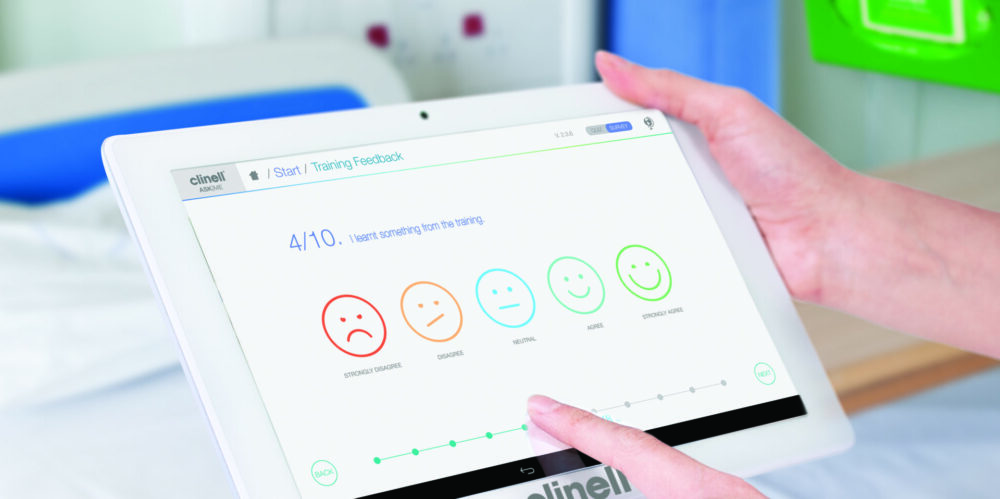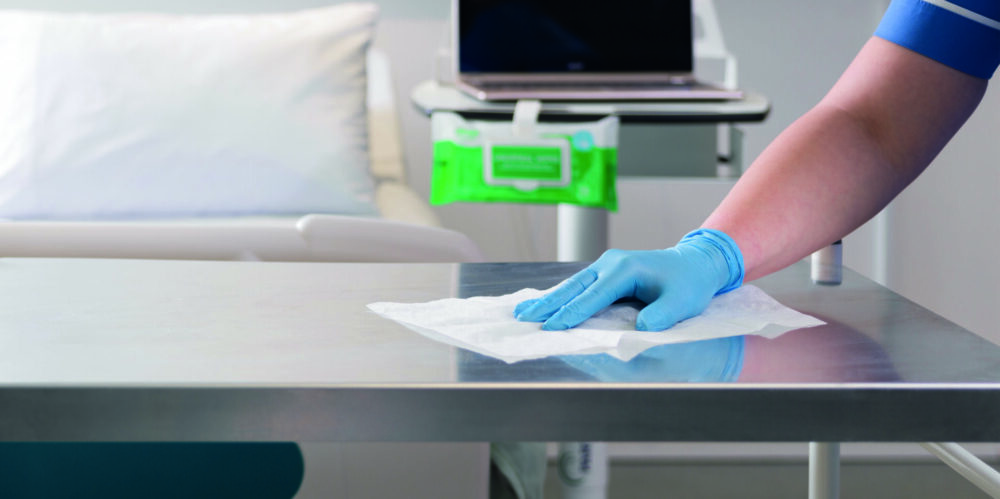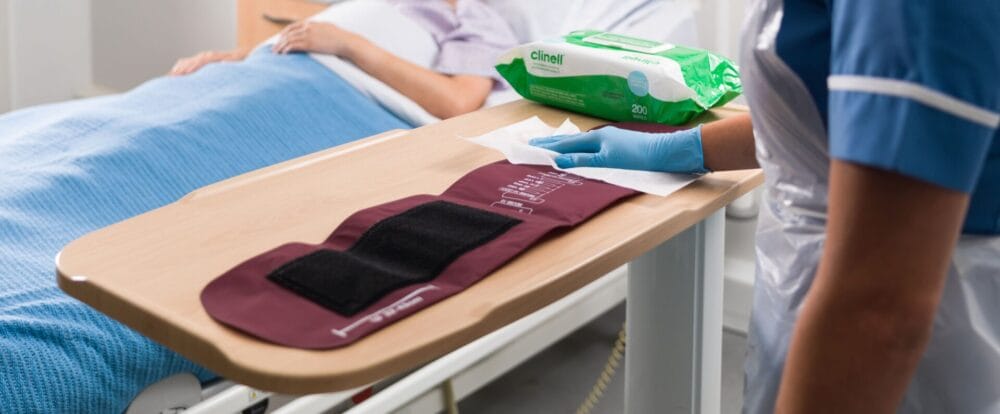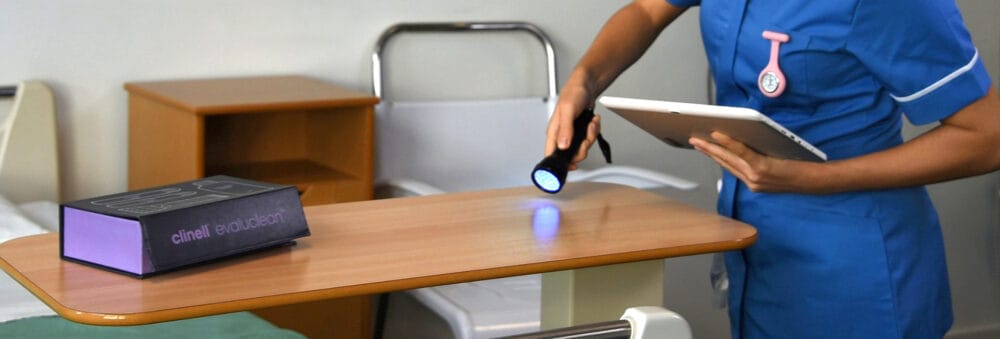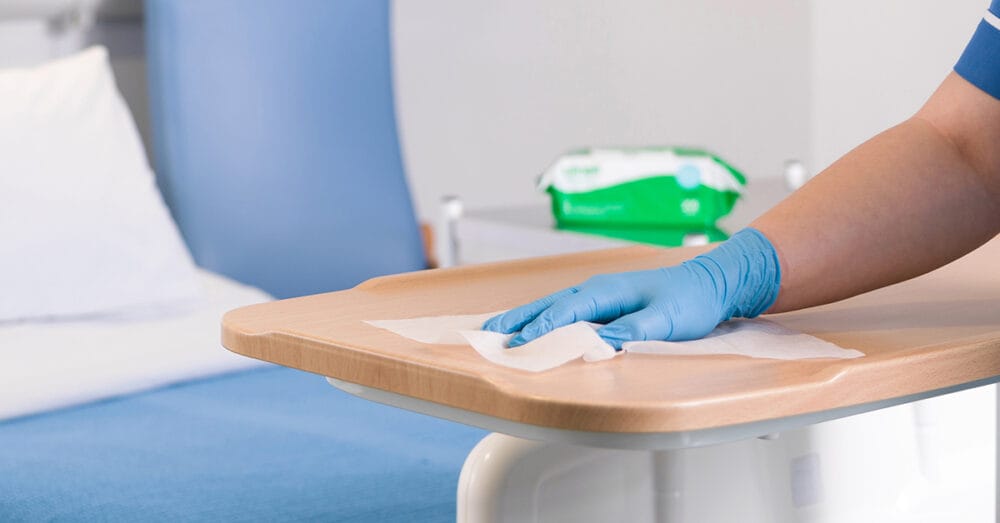Posts Tagged ‘DISINFECTION’
Improving hospital cleaning and disinfection
This post shares the findings of a recent study exploring improving hospital cleaning and disinfection through streamlining product and enhanced training. A team working in Lanarkshire, the third largest health board in Scotland, has recently published a study evaluating the impact of an intervention to improve hospital cleaning and disinfection through the implementation of pre-impregnated wipes combined…
Read MoreLatest review of the effectiveness of disinfectant wipes
Prof John Boyce has written an excellent review paper providing an overview of disinfectant wipes for hard surfaces in healthcare settings. The review covers the range of approaches to disinfectant wipes (e.g. dry wipes moistened in practice, or ready-to-use wipes), the need for appropriate and standardised testing, and the role of training and education for staff to…
Read MoreEnvironmental contamination with COVID-19: how big is the risk?
There have been several studies examining the potential risk for contaminated environmental surfaces being involved in the transmission of COVID-19. We know that the SARS-CoV-2 virus, that causes COVID-19, can survive on dry surfaces for days, like its ‘cousins’ the SARS and MERS viruses. We know it can be found in clinical settings during the care…
Read MoreInflated prices for Clinell products during the coronavirus outbreak
We do not condone inflating prices in the wake of the coronavirus outbreak. We want our products to be readily available to protect those most in need. Inflated prices on Clinell products. In light of the coronavirus outbreak, we’re experiencing a very high demand for our Clinell hand and surface disinfection products. We’d like to thank those…
Read MoreThe role of the environmental hygiene nurse in preventing HCAI
An interesting article published recently in Infection Prevention in Practice illustrates the potential for a dedicated nursing role focussed on environmental hygiene to prevent HCAI. The study was performed in a 32-bed general ICU in Argentina. The intervention was the introduction of a novel post: the “Hospital environmental hygiene nurse”. This post was a full-time post dedicated to direct…
Read MoreWhy all-in-one detergent disinfectant wipes are faster, more effective and longer-lasting
An Italian study evaluated two different methods of environmental disinfection for high-touch surfaces contaminated with carbapenem-resistant Acinetobacter baumannii. The standard method was a two-step method involving cleaning followed by a disinfection step using a chlorine-based disinfectant. The new method was a one-step process using a pre-impregnated detergent/disinfectant wipes (Gama Universal wipes, as it happens!). The one-step process using…
Read MoreChlorine vs. Candida auris
You’d expect a powerful oxidising disinfectant like chlorine to be effective against Candida auris. However, a recent US study finds that the efficacy of chlorine against C. auris is very much concentration dependent. Chlorine concentrations of 4,000 ppm or higher (we use 5,200 ppm in our Clinell Clorox wipes) were able to achieve a >3-log reduction on C. auris within a minute,…
Read MoreThe risk of cross-transmission from blood pressure cuffs
Blood pressure cuffs come into frequent contact with the skin of patients (obviously) and are rarely disinfected. A number of studies have evaluated whether and to what extent blood pressure cuffs become contaminated with pathogens that may cause HCAI. This post reviews a few of these articles, illustrating the risk of cross-transmission from contaminated blood…
Read MoreAn assessment of early onset surface damage from disinfectant exposure in healthcare settings
The prospect of surface damage related to material compatibility is a concern when planning hospital disinfection protocols. Evidence in this sphere is limited, so it’s good to see this study published in ARIC, illustrating the potential for surface damage for some combinations of disinfectants and surface materials. Six different surface materials were included (including plastic, metal, and…
Read MoreThe biofilm challenge for cleaning, disinfection, and sterilisation
In the AJIC special issue on ‘Disinfection, sterilization, and antisepsis’, there is a helpful State-of-the-Science mini-review on the importance of biofilms in medical device reprocessing and healthcare surface disinfection. The review covers the growing appreciation that biofilms present a tough challenging to cleaning, disinfection, and sterilisation attempts for both medical devices and surfaces in healthcare settings. The review draws…
Read More